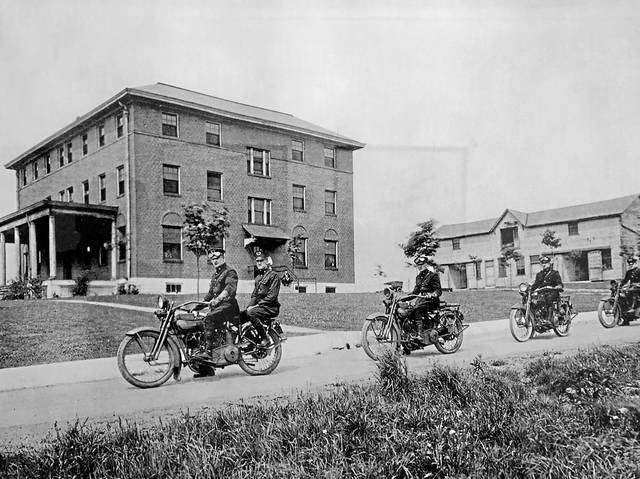20 significant dates in Pennsylvania State Police history
Time was when Pennsylvania State Police troopers were unmarried men who were required to live in dorm-style rooms in their barracks. Over time, married men were able to join, but the state police stayed an exclusive boys’ club — no women allowed.
Eventually, the doors opened to admit women. But they didn’t have it easy at first, though, says Lt. Steven Paraska, station commander of Greensburg-based Troop A.
Early female troopers wore skirts and carried their guns in specially designed shoulder bags that also had slots for extra ammunition.
“They almost looked like airline stewardesses,” Paraska says. “I don’t know how you could arrest someone dressed in a skirt. How could you draw a gun from a purse?”
As times changed, the skirts and purses were retired, just a couple of changes state police have seen over the years. Here are a few landmark dates from the organization’s 20th-century history, courtesy of the Pennsylvania State Police Museum:
1905 — Pennsylvania State Police became the first uniformed police organization of its kind in the United States and a model for other state police agencies throughout the nation.
1906 — The first two state policemen were killed in the line of duty on Sept. 2 in Florence, Jefferson County.
1919 — A maximum force of 415 men was authorized, up from the original 228 who were to patrol Pennsylvania’s entire 45,000 square miles.
1924 — State Police Training School was established in Hershey, Dauphin County.
1927 — A new regulation prohibited any member from marrying without the superintendent’s approval.
1932 — The first polygraph (lie detector) was purchased.
1946 — The first statewide radio telephone system was installed.
1957 — Mandatory retirement age was set at 60, exclusive of the commissioner and deputy commissioner.
1961 — State police officially began radar speed checks.
1963 — Married men were permitted to apply.
1968 — State Police Aviation Division was established.
1971 — The first female cadet applicant was accepted. The academy class containing the first female Troopers graduated on July 7, 1972.
1979 — First helicopters were put into service for disaster rescues and emergency medical transportation — the acquisition spurred, in large part, by the 1977 Johnstown flood.
1981 — The first phase of computerizing the Master Name Index of the criminal history file was completed.
1982 — PSP developed Pennsylvania Crime Watch in an effort to reduce and solve crime.
1987 — Enforcement of state liquor laws was transferred to PSP; Bureau of Liquor Control Enforcement was established.
1988 — The first Canine Drug Enforcement Teams became operational.
1990 — Automated Fingerprint Identification System became operational (AFIS can search 1 million fingerprint cards in 30 minutes, a task that would take 65 years to complete manually).
1993 — PSP became the largest accredited police agency in the world, a status earned by complying with 733 professional police standards.
1996 — The use of video cameras in patrol cars was authorized.
Source: psp-hemc.org
Shirley McMarlin is a Tribune-Review staff writer. You can contact Shirley by email at smcmarlin@triblive.com or via Twitter .
Remove the ads from your TribLIVE reading experience but still support the journalists who create the content with TribLIVE Ad-Free.

